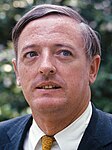
John Vliet Lindsay was an American politician and lawyer. During his political career, Lindsay was a U.S. congressman, the mayor of New York City, and a candidate for U.S. president. He was also a regular guest host of Good Morning America. Lindsay served as a member of the United States House of Representatives from January 1959 to December 1965 and as mayor of New York from January 1966 to December 1973.
The Liberal Party of New York is a political party in New York. Its platform supports a standard set of socially liberal policies, including abortion rights, increased spending on education, and universal health care.
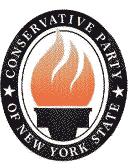
The Conservative Party of New York State is an American political party founded in 1962 following conservative dissatisfaction with the Republican Party in New York. Running on the Conservative Party line, James L. Buckley won election to the U.S. Senate in 1970 and served for one term. Since 2010, the party has held "Row C" on New York ballots—the third-place ballot position, directly below the Democratic and Republican parties—because it received the third-highest number of votes of any political party in the 2010, 2014 and 2018 New York gubernatorial elections. The party is known for its strategy of attempting to influence the Republican Party in a more conservative direction.

The mayor of New York City is elected in early November every four years, in the year immediately following a United States presidential election year, and takes office at the beginning of the following year. The city, which elects the mayor as its chief executive, consists of the five boroughs, which consolidated to form "Greater" New York on January 1, 1898.
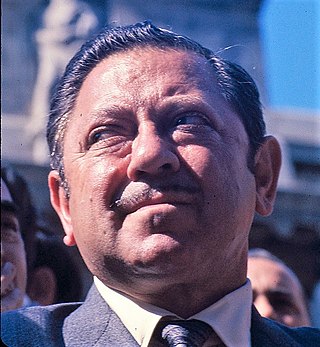
Mario Angelo Procaccino was an Italian-American lawyer, comptroller, and candidate for Mayor of New York City.

The 1974 New York state election was held on November 5, 1974, to elect the governor, the lieutenant governor, the state comptroller, the attorney general, two judges of the New York Court of Appeals and a U.S. Senator, as well as all members of the New York State Assembly and the New York State Senate.

The 1970 New York state election was held on November 3, 1970, to elect the governor, the lieutenant governor, the state comptroller, the attorney general and a U.S. Senator, as well as all members of the New York State Assembly and the New York State Senate.
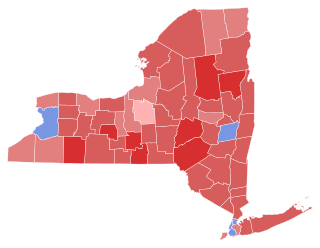
The 1962 New York state election was held on November 6, 1962, to elect the governor, the lieutenant governor, the state comptroller, the attorney general, a judge of the New York Court of Appeals and a U.S. Senator, as well as all members of the New York State Assembly and the New York State Senate.
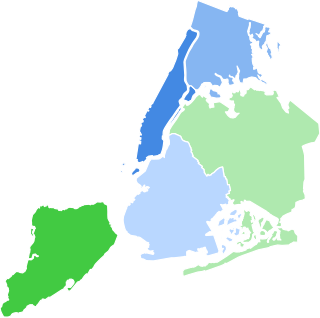
The New York City mayoral election of 1977 occurred on Tuesday, November 8, 1977.

The 1952 United States Senate election in New York was held on November 4. Incumbent Republican Senator Irving M. Ives was re-elected to a second term in office over Democrat John Cashmore with a then-record margin of victory.

The 1966 New York gubernatorial election was held on November 8, 1966 to elect the Governor and Lieutenant Governor of New York. Incumbent Republican Nelson Rockefeller won reelection. As of 2022, this is the last time Manhattan voted for a Republican in a statewide election.

The 1968 New York state election was held on November 5, 1968, to elect a judge of the New York Court of Appeals and a U.S. Senator, as well as all members of the New York State Assembly and the New York State Senate.
Lawrence Ettore Gerosa was an Italian-American politician who served as New York City Comptroller from 1954 to 1961.
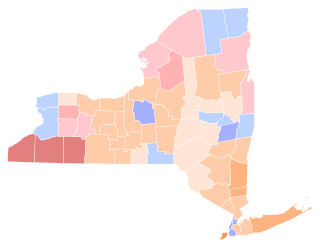
The 1970 United States Senate election in New York was held on November 3, 1970, to elect New York's Class I Senator in its delegation. Representative Charles Goodell had been appointed by Governor Nelson Rockefeller to serve the remainder of Robert F. Kennedy's senatorial term, following Kennedy's assassination.

The 1969 New York City mayoral election occurred on Tuesday, November 4, 1969, with incumbent Liberal Party Mayor John Lindsay elected to a second term. Lindsay defeated the Democratic candidate, New York City Comptroller Mario Procaccino, and the Republican candidate, state senator John Marchi.

The New York City mayoral election of 1973 occurred on Tuesday, November 6, 1973, with the Democratic candidate, New York City Comptroller Abraham Beame winning the mayoralty with a decisive majority amongst a highly divided field.

The New York City mayoral election of 1961 occurred on Tuesday, November 7, 1961. Incumbent Democratic Mayor Robert F. Wagner, Jr. won a decisive re-election victory for a third term in office. Wagner defeated the Republican nominee, state Attorney General Louis J. Lefkowitz, and the Citizens Party nominee, New York City Comptroller Lawrence E. Gerosa. Wagner received 51.03% of the vote to Lefkowitz's 34.46%, a Democratic victory margin of 16.57%.

The New York City mayoral election of 1953 occurred on Tuesday, November 3, 1953, with the Democratic candidate, Manhattan Borough President Robert F. Wagner, Jr. winning a decisive plurality in a three-way race.
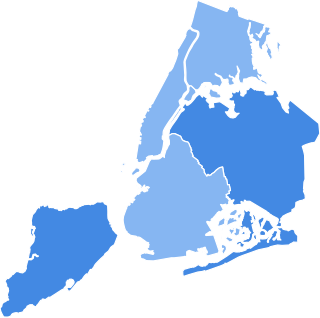
The 1945 New York City mayoral election took place on November 6, 1945 in New York City. The candidates were King County District Attorney William O'Dwyer, a Democrat, and Jonah J. Goldstein, a Republican judge, as well as other, third party candidates.
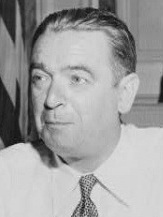
The New York City mayoral election of 1949 took place on November 8, 1949 in New York City. The candidates were incumbent Mayor William O'Dwyer, a Democrat, and former City Council President and 1945 mayoral candidate Newbold Morris, a Republican, as well as other, third-party candidates. Morris was also the nominee of the Liberal Party, and additionally ran on the City Fusion ballot line.




